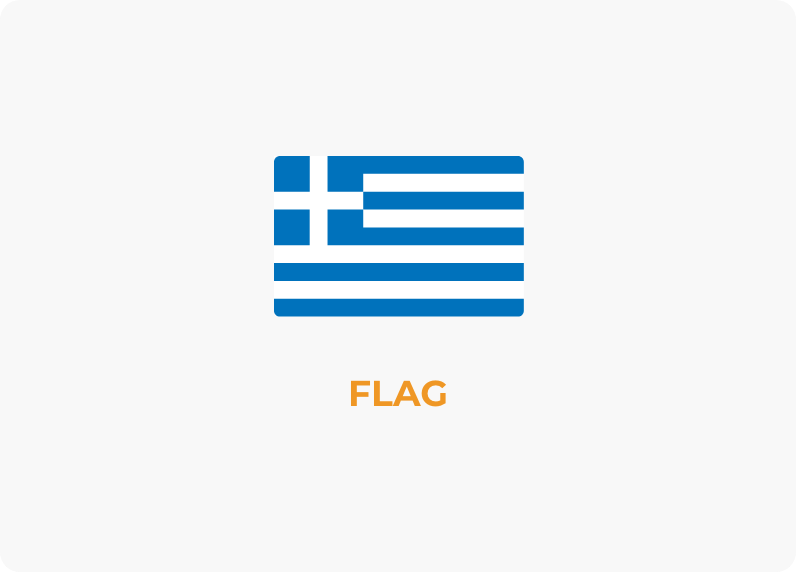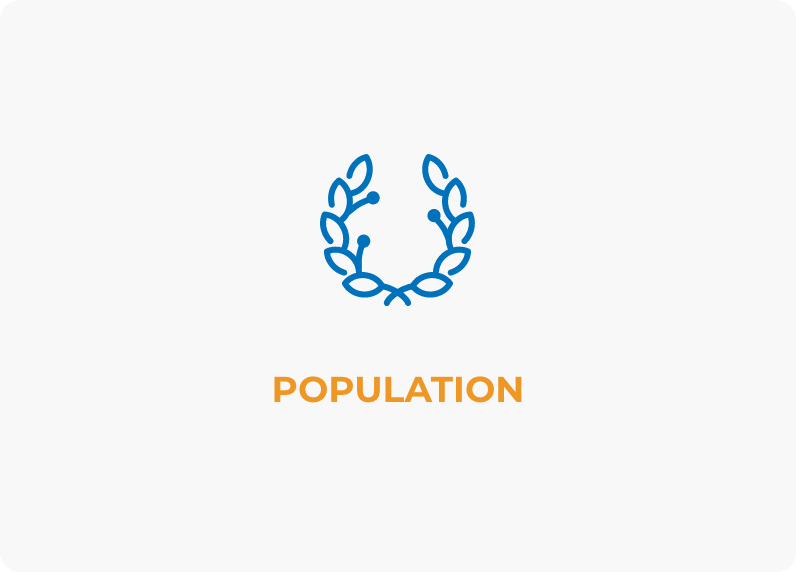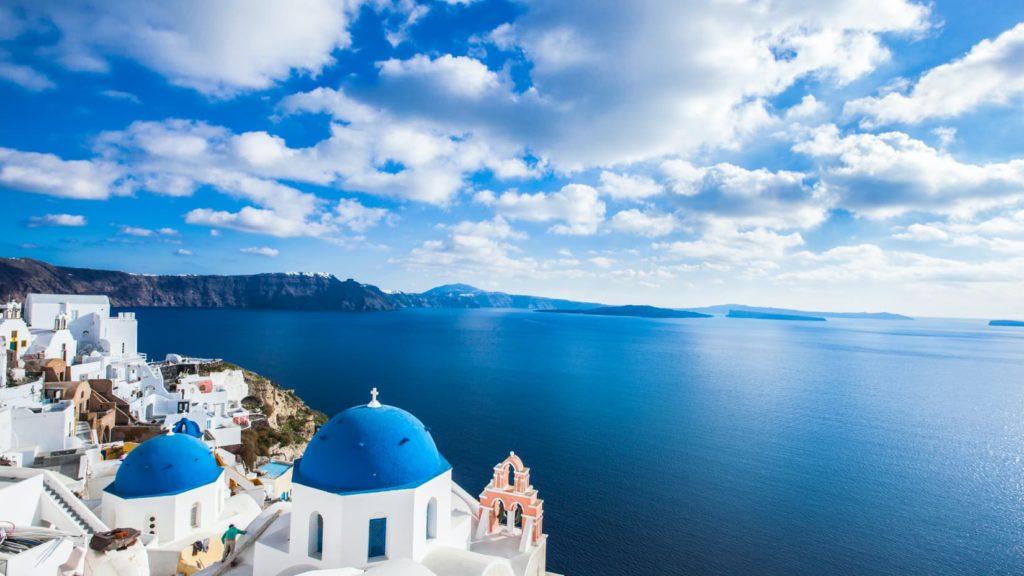Greece, the Place to Be
About Greece
Greece is mostly known for 3 things: its ancient civilization and the dawn of Democracy, the amazing natural beauty of its mainland and islands and, last but not least, its coveted, world-renowned tourism.
Adored by people of all generations, Greece is so rich in culture and charm, that it never seems to be completely explored, no matter how many times you visit it. It’s no surprise that it is one of the top 20 tourist holiday-destinations worldwide.








The Greek economy is based on the principles of free economy and is bound by the regulations of the world organizations that it is a member of, such as ECOFIN and WTO.
For further information and news regarding Greek domestic politics, Greece’s international affairs, social issues, business, culture and sports, you can also visit: Athens News Agency (A.N.A.) & Macedonian Press Agency (M.P.A.) The daily online bulletin (Greek News Agenda) issued by the Greek Secretariat General of Information.
ALWAYS SUNNY
CLIMATE & WEATHER

The climate in Greece is typical Mediterranean with plenty of sunshine, mild temperatures and a limited amount of rainfall.
There is great variation in Greece’s climate due to the country’s geographical position, its rugged relief and its distribution between the mainland and the sea.
During the summer, the dry hot days are cooled off by a pleasant seasonal wind called the meltemi, while the mountainous regions generally have lower temperatures.
The winters in the lowland areas are mild, with very little snow and ice, yet, the mountains are usually snow-covered. Moreover, a common phenomenon is the occurrence of different climactic conditions during the same season (for instance, mild heat in coastal areas and cool temperatures in mountainous regions).
Time Zone & Local Holidays
Time Greece: GMT +2
HOLIDAYS
DATES TO REMEMBER
New Years Day:
1st of January
Epiphany:
6th of January. Waters are blessed in all seaside areas. The priests throw the Cross into the sea and young men dive to catch it.
Ash or Clean Monday:
50 days before Easter. It is the day that the Easter Lent begins. On Ash Monday, according to tradition the Greeks fly kites, eat food that doesn’t include meat or meat products and celebrate Koulouma. People gather in the country side on top of hills have picnics and fly kites.
Independence Day and Celebration of Evaggelismos (Annunciation) of the Virgin Mary:
25th of March. Military parade.
Easter:
the peak of the holy week starts from Holy Friday and reaches its peak on Easter Sunday. On Holy Friday evening every church celebrates the Epitaph (Bier of Christ) and the epitaph is processed in the streets of every neighbourhood throughout the country followed by people. It is a religious procession where everybody holds lit candles in their hands and sings hymns.
Night of the Resurrection:
It is celebrated in midnight before Easter Sunday with fireworks and candles and cheerful atmosphere.
Easter Sunday: On Easter Sunday Greeks roast lamb on the skewer. The celebrations include eating, drinking, singing and dancing all day long.
Labour Day: 1st of May. Flower feasts all around Greece.
Pentecost:
It is celebrated 50 days after Easter.
Assumption of the Virgin Mary: 15th of August.
National Celebration, military parade: 28th of October
Christmas: 25th-26th of December.
PAYMENTS
EXCHANGE CURRENCIES
Greece is a Member-State of the European Union and uses its uniform currency – the Euro. Greece, as is the case with the other Member-States of the E.U. uses eight coins as follows: 1, 2, 5, 10, 20 and 50 cents or lepta in Greek and 1 and 2 Euros.
The banknotes are issued in the following denominations: 5, 10, 20, 50, 100, 200 and 500 Euros. Currency exchange rates are clearly displayed in every bank that accepts currency exchange, while credit card holders may acquire money from the ATMs of the collaborating banks. Greek banks are open for the public from 8:00 to 14:30 Monday to Thursday and from 8:00 to 13:30 on Fridays. They are closed on weekends and during Public Holidays.
You can also exchange into the Euros at the so called exchange offices which are situated at the airport at certain main ports, in the larger cities, as well as at many tourist destinations. A passport is required when exchanging currency. Many of the hotels are authorized to exchange money as well.
WHERE TO MEET US
LOCATION
Greece is located in south-eastern Europe and on the southern end of the Balkan Peninsula; it lies on the meeting point of three continents – Europe, Asia and Africa. Greece has borders towards the North with Bulgaria and the Former Yugoslav Republic of Macedonia (F.Y.R.O.M.), towards the Northwest with Albania and towards the Northeast with Turkey; The West part of Greece it is washed by the Ionian Sea; the South by the Mediterranean Sea and the East by the Aegean Sea.
The total area of Greece is 131,957 km2 and consists of three main geographic areas:
Click here to view the destinations, ports & airports.
3000 YEARS
GREEK HISTORY
The visitors of Greece today have the opportunity to find traces of Greek history from the Palaeolithic Era to the Roman Period in the hundreds of archaeological sites, as well as in the many archaeological museums and collections that are scattered throughout the country.
The first traces of human habitation in Greece appeared during the Palaeolithic Age (approx. 120000 – 10000 B.C.) also from the Neolithic Age that followed (approx. 7000 – 3000 B.C.), a plethora of Neolithic buildings are spread throughout the country. Many buildings and cemeteries have been discovered in Thessaly (Sesklo, Dimini), Macedonia, the Peloponnese, etc.
The beginning of the Bronze Age (approx. 3000-1100 B.C.) is marked by the appearance of the first urban centres in the Aegean region (Poliochni on Limnos). Flourishing settlements were found on Crete, Mainland Greece, the Cyclades and the North-eastern Aegean; and different characteristic cultural patterns developed.
At the beginning of the 2nd Millennium B.C., organized palatial societies appeared on Minoan Crete, resulting in the development of the first systematic scripts. The Minoans, with Knossos Palace as their epicentre, developed a communications network with races from the Eastern Mediterranean regions, adopted certain elements and in turn decisively influenced cultures on the Greek mainland and the islands of the Aegean.
On Mainland Greece, the Mycenaean Greeks –taking advantage of the destruction caused on the island Crete by the volcanic eruption on the island of Santorini (around 1500 B.C.)- became the dominant force in the Aegean during the last centuries of the 2nd Millennium B.C.
The Mycenaean built acropolises (citadels) in Mycenae, Tiryns, Pylos, Thebes, Glas, Athens and Iolcus, and thus they comprised the centres of the bureaucratically organized kingdoms.
The extensive destruction of the Mycenaean centres around 1200 B.C. led to the decline of the Mycenaean civilization and caused the majority of the population to migrate to the coastal regions of Asia Minor and Cyprus (1st Greek colonization).
After approximately two centuries of economic and cultural inactivity, which is also known as the Dark Years (1150 – 900 B.C.); the Geometric Period followed (9th – 8th Century B.C.) and this was the beginning of the years of the Greek Renaissance. This period was marked by the formation of the Greek City-States, the creation of the Greek alphabet and the composition of the Homeric epic poems (end of the 8th Century B.C.)
The Archaic Years that subsequently followed (7th – 6th Century B.C.) were a period of major social and political changes. The Greek City-States established colonies as far as Spain to the west, as far as the Black Sea to the north and N. Africa to the south (2nd Greek colonization) and laid the foundations for the acme that came during the Classical Period.
The Classical Years (5th – 4th Century B.C.) were characterized by the cultural and political dominance of Athens, to the point that the second half of the 5th Century B.C. was subsequently called the “Golden Age” of Pericles. With the end of the Peloponnesian War in 404 B.C., Athens lost its leading role.
New forces emerged during the 4th Century B.C. The Macedonians, with Philip II and his son Alexander the Great, began to play a leading role in Greece. Alexander’s campaign to the East and the conquest of all the regions as far as the Indus River radically changed at that era, the situation in the world.
After the death of Alexander, the vast empire he had created was then divided among his generals, leading to the creation of the kingdoms that would prevail during the Hellenistic Period (3rd – 1st Century B.C.). In this period the Greek City-States remained more or less autonomous, but at the same time lost much of their old power and prestige. The appearance of the Romans on the scene and the final conquest of Greece in 146 B.C. forced the country to join the immense Roman Empire.
Most of the Roman emperors admired the Greek culture, thought and aesthetics and therefore during the period of the Roman occupation, (1st Century B.C. – 3rd Century A.D.), acted as benefactors to the Greek cities and especially to Athens.
Christianity, the new religion, then deposed the worshipping of the Dodecatheon (12-Olympian Gods), and spread all over Greece through the travels of Apostle Paul, during the 1st Century A.D.
The decision of Constantine the Great to move the capital of the empire from Rome to Constantinople (324 A.D.) shifted the focus of attention towards the eastern part of the empire.
This change marked the beginning of the Byzantine Years, during which Greece became part of the Byzantine Empire.
After 1204, when Constantinople was taken over by Western crusaders, parts of Greece was distributed out to western leaders, while the Venetians in order to control the trade routes, managed to gain the occupation of strategic positions in the Aegean (islands or coastal cities).
The reoccupation of Constantinople by the Byzantines in 1262 marked the last stages of the empire’s existence.
The Ottomans gradually began to seize parts of the empire from the 14th Century A.D. until the final collapse of the Byzantine Empire and the conquering of Constantinople in 1453.
Crete was the final area of Greece to be occupied by the Ottomans in 1669.
It took around four centuries of Ottoman domination before the beginning of the Greek War of Independence in 1821.
Numerous monuments from the Byzantine Years and the Ottoman occupation period have been preserved, including Byzantine and Post-Byzantine churches and monasteries, Ottoman buildings and charming Byzantine or Frankish castles. Besides the various monuments, traditional settlements still exist and quite a few of them retain their Ottoman and partly Byzantine structure.
The result of the Greek War of Independence was the creation of an autonomous Greek Kingdom in 1830, but with limited sovereign land.
During the 19th century and the beginning of the 20th, new areas with compact Greek populations were gradually added to the Greek State. The independent land of Greece would reach its maximum after the end of Word War I in 1920, with the substantial contribution of Eleftherios Venizelos, who was the Prime Minister of the time.
The Greek State took its current form after the end of World War II with the incorporation of the Dodecanese Islands.
In 1974, after the seven-year dictatorship period (junta); a referendum was held and the government changed from a Constitutional Monarchy to a Presidential Parliamentary Democracy, and in 1981 Greece became the 10th member of the European Community/Union.
GREEK
CIVILIZATION
Civilization, by definition, is the total sum of the material and cultural achievements of a group of people. Culture and art are two concepts closely interwoven, as art is the characteristic expression of the culture of a given period. Arts such as architecture, sculpture, pottery, weaving, as well as music, jewellery making and painting have a long-term tradition in Greece; since we have traces that from the Prehistoric Years; civilizations had already considerably developed them.
We have little information about the Palaeolithic Era in Greece, but on the contrary, quite a lot is known about the period that followed; the Neolithic Period (approx. 7th – 4th Millennium B.C.) and the civilisation of that era, which is traced in many areas throughout Greece but mainly in Thessaly and Macedonia.
During the Bronze Age(approx. 3000 – 1150 B.C.), we have the development of civilisations with impressive achievements in the North-eastern Aegean, the Cyclades (its trademark being the large-sized marble figurines), Crete and in the mainland of Greece. The civilisations that flourished during the 2nd Millennium were two very important ones from two different regions, known as the Minoan (from Crete) and the Mycenaean Periods (from the Peloponnese), are considered to be the pioneers of the great civilisations that followed in Greece. Architectural remains (palaces), as well as pottery work, stone carving (vessels, seal stones), metallurgy (vessels, weapons), making of jewellery and paintings (murals); were very impressive and characteristic works of these civilisations.
During the historical years, the civilisations of the Geometric Period (9th – 8th Century B.C.) and the Archaic Period (7th – 6th Century B.C.) were considered to be the predecessors of the culture that was to be found in the Classical Period (5th – 4th Century B.C.).
The Classical works of art, with their ideal proportions and beauty, expressed the philosophical ideals of their times and were the model of the European Renaissance Era of the 15th Century A.D.
Greek civilisation developed during the subsequent Hellenistic Years (3rd – 1st Century B.C.) and the Roman Years (1st Century B.C. – 3rd Century A.D.), within the framework of large kingdoms and an empire respectively.
Later on the Greek civilisation flourished again within the framework of another empire, during the Byzantine Years (early, middle and late – 4th – 15th Century A.D.); while civilisation in more recent times was marked by the Ottoman occupation and the emergence of the new Hellenic State after the Greek War of Independence (1821-1830).
A visit to archaeological sites, museums and monuments throughout the country provides a vivid picture of the civilisations in Greece and their accomplishments in arts and technology from the Prehistoric Era to modern times.
The traditions and heritage of a country summarize the cultural and material achievements bequeathed by previous generations. The folk culture of the Greek people is rich in music, dances, poetry and theatre and it is part of their every day life. All over the country many specialized museums and cultural organisations have been created, aiming to preserve and study the Greek heritage and tradition.

